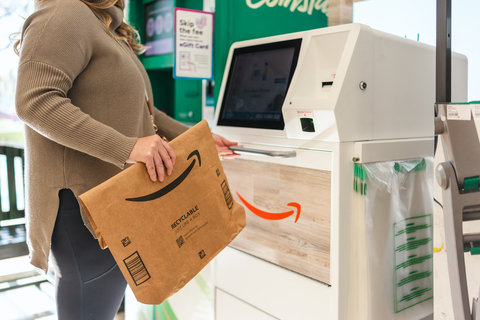
Online grocery sales maintained their rapid growth in May, driven by lower prices and an influx of new online shoppers, according to ecommerce sales data from Signifyd. Overall, grocery spending increased by 30% year-over-year in May, as per Signifyd’s monthly Ecommerce Pulse data report. This growth rate significantly outpaces inflation and indicates that consumers’ strong spending on groceries has continued unabated, suggesting a long-discussed, post-pandemic “new normal.”
Ecommerce sales in the grocery sector, which includes curbside pickup, surged during the pandemic for obvious reasons. Now, even though concerns about in-person shopping have subsided, online grocery sales show no signs of returning to pre-pandemic levels.
“Grocery sales have remained consistently strong throughout the year — up 23% overall,” said Signifyd Data Analyst Phelim Killough, who prepares Signifyd’s monthly Pulse report. “This increase is largely driven by a higher order count, and we found that these orders are coming from significantly more online grocery shoppers than a year ago.”
Signifyd’s data for the first five months of the year provides evidence of a lasting transformation in grocery shopping. According to Signifyd’s Ecommerce Pulse data, since January:
- Online grocery sales are up 23% compared to the same period last year.
- The number of orders is up 31% over last year.
- The average value of each order placed is down 6%.
- The number of new online grocery shoppers is up 10%.
- Orders placed per shopper (as identified by a unique combination of digital signals) are up 19%.
- Home delivery orders grew by 25%, while curbside pickup was up 21%.
This sales surge is occurring as ecommerce inflation in groceries has flattened, down 0.1% from a year ago, compared to a year-over-year inflation rate of 6.7% in May 2023.
These trends indicate a growing group of shoppers who are mindful of their spending while turning to online ordering more frequently than a year ago. Merchants and brands need to approach pricing decisions strategically to appeal to their expanding and increasingly price-sensitive market.
Ecommerce Sales: May 2024 vs. May 2023
- All categories: +12%
- Auto parts & tires: +5%
- Beauty & cosmetics: -2%
- Electronics: -2%
- Grocery & household: +30%
- Home goods: +4%
- Leisure & outdoor: +4%
- Luxury goods: -3%
- Fraud pressure: +35%
Overall, ecommerce sales in May were up 12% compared to a year ago, according to Signifyd Pulse data. Besides groceries, other popular categories that saw gains included auto parts and tires, up 5%, and home goods and leisure and outdoor, both up 4% year-over-year. Meanwhile, luxury goods were down 3%, and the beauty and electronics categories each declined by 2% annually.
Fraud pressure in May was up 35% over a year ago. Fraud pressure measures the rise and fall of orders determined by Signifyd’s AI models to be very risky and likely fraudulent.
For more detailed May data, including trends in fraud, buy online and pick up in-store, buy now and pay later, sustainable goods, and private label sales, visit Signifyd’s Ecommerce Pulse Hub.
Methodology
Signifyd’s Ecommerce Pulse data is derived from transactions on Signifyd’s Commerce Network of thousands of ecommerce retailers and brands. The Commerce Network intelligence also powers Signifyd’s Commerce Protection Platform, which uses AI-driven machine learning models and data from millions of transactions to detect and block fraudulent activity while increasing the number of legitimate orders approved. Signifyd has observed more than 600 million unique shopper wallets globally, meaning that 98% of the time, when a shopper visits a Signifyd-protected site, Signifyd’s machine-learning models recognize the shopper instantly.







